Hidden among Sardinia’s sun-drenched landscape, I stumbled upon one of Italy’s most fascinating ancient treasures.
Nuraghe Su Nuraxi in Barumini stands as Sardinia’s only UNESCO World Heritage Site and showcases the most impressive example of the mysterious stone towers from the Bronze Age. Locals call these massive conical structures nuraghi, and you won’t find them anywhere else but this Mediterranean island. They date back to somewhere between 1900 and 730 BC.
When I wandered around Su Nuraxi, the central tower really blew me away. It once soared over 18.5 meters high and had three chambers linked by a winding spiral staircase.
A cluster of smaller towers and a surrounding village encircle the main tower, highlighting the Nuragic people’s engineering chops. What really grabs me is the mystery: Why did they build these things? Were they fortresses, homes for chiefs, sacred spaces, or something totally different?
The stone towers at Su Nuraxi give us a rare peek into Sardinia’s ancient past.
As I explored, running my fingers over stones placed by Bronze Age hands, I felt strangely connected to the civilization behind these structures.
If you’re heading to Sardinia, put this archaeological wonder right at the top of your list.
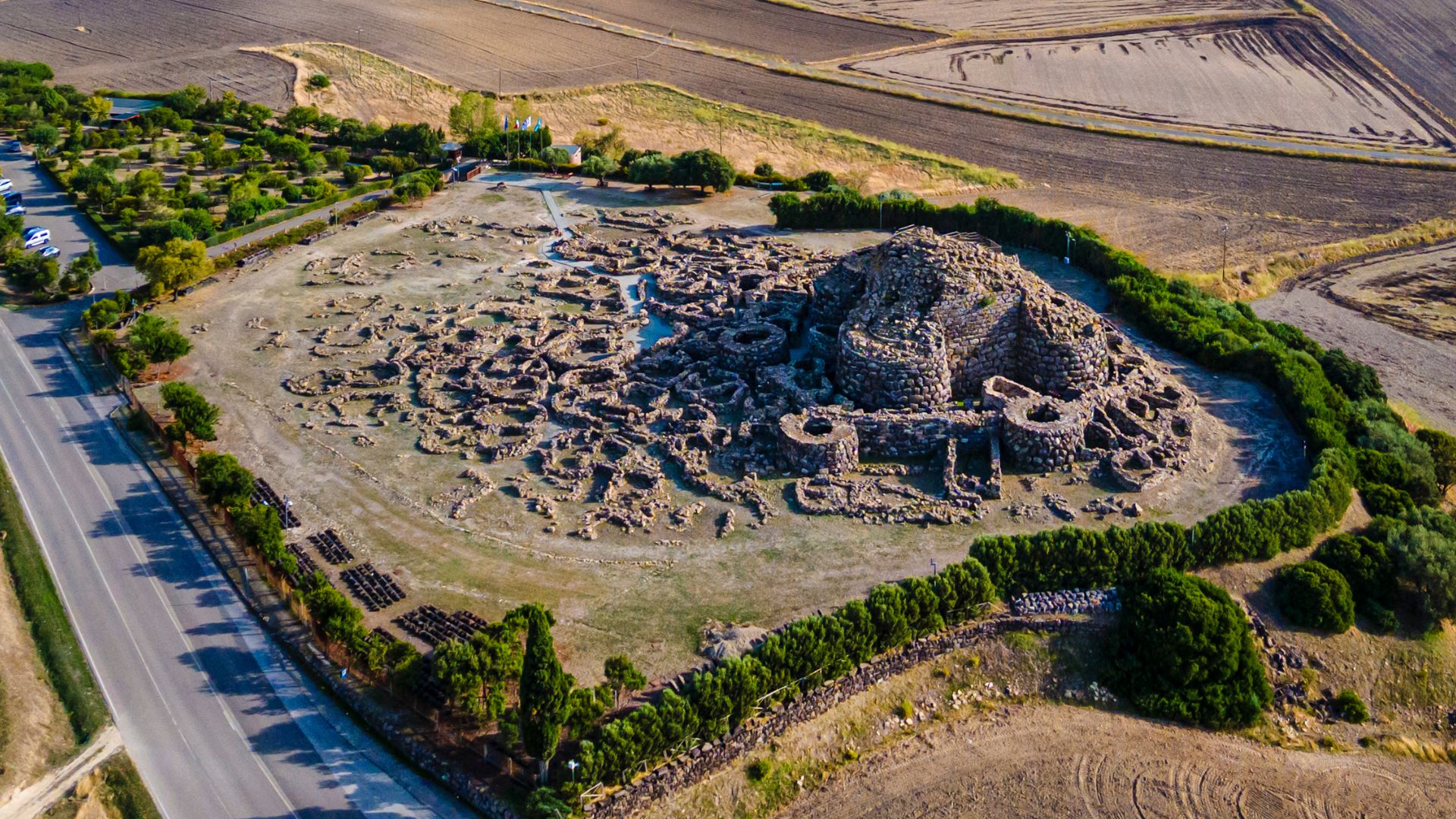
Origins and History of Nuraghe Su Nuraxi
Nuraghe Su Nuraxi stands as proof of Sardinia’s rich Bronze Age legacy.
I was amazed to find out that this stone complex is one of the most sophisticated creations from the ancient Nuragic people who once ruled this island.
Prehistoric Times and Early Settlement
Su Nuraxi’s story stretches back before the towers appeared.
When I visited, I learned the earliest human activity here goes back to about 1800 BCE.
The Sardi people settled first, drawn by fertile land and a strategic hilltop.
They started with simple structures and later developed more advanced building methods.
What fascinates me is how these folks shifted from small farming groups to a more organized society.
They left behind pottery shards, tools, and early religious artifacts that reveal their slow cultural evolution.

Bronze Age Construction
Builders raised Su Nuraxi’s main tower around 1600-1500 BCE, during the Middle Bronze Age.
I couldn’t believe the engineering: a central tower rising about 19 meters, with walls nearly 5 meters thick at the bottom!
They didn’t use mortar—just carefully fitted stones, balanced with real skill.
The main nuraghe includes:
- A circular base with inner chambers
- A corbeled vault ceiling
- Several floors joined by stone staircases
- Defense corridors and lookout points
Between 1200 and 900 BCE, they added four more towers, linking them with ramparts to create today’s complex.
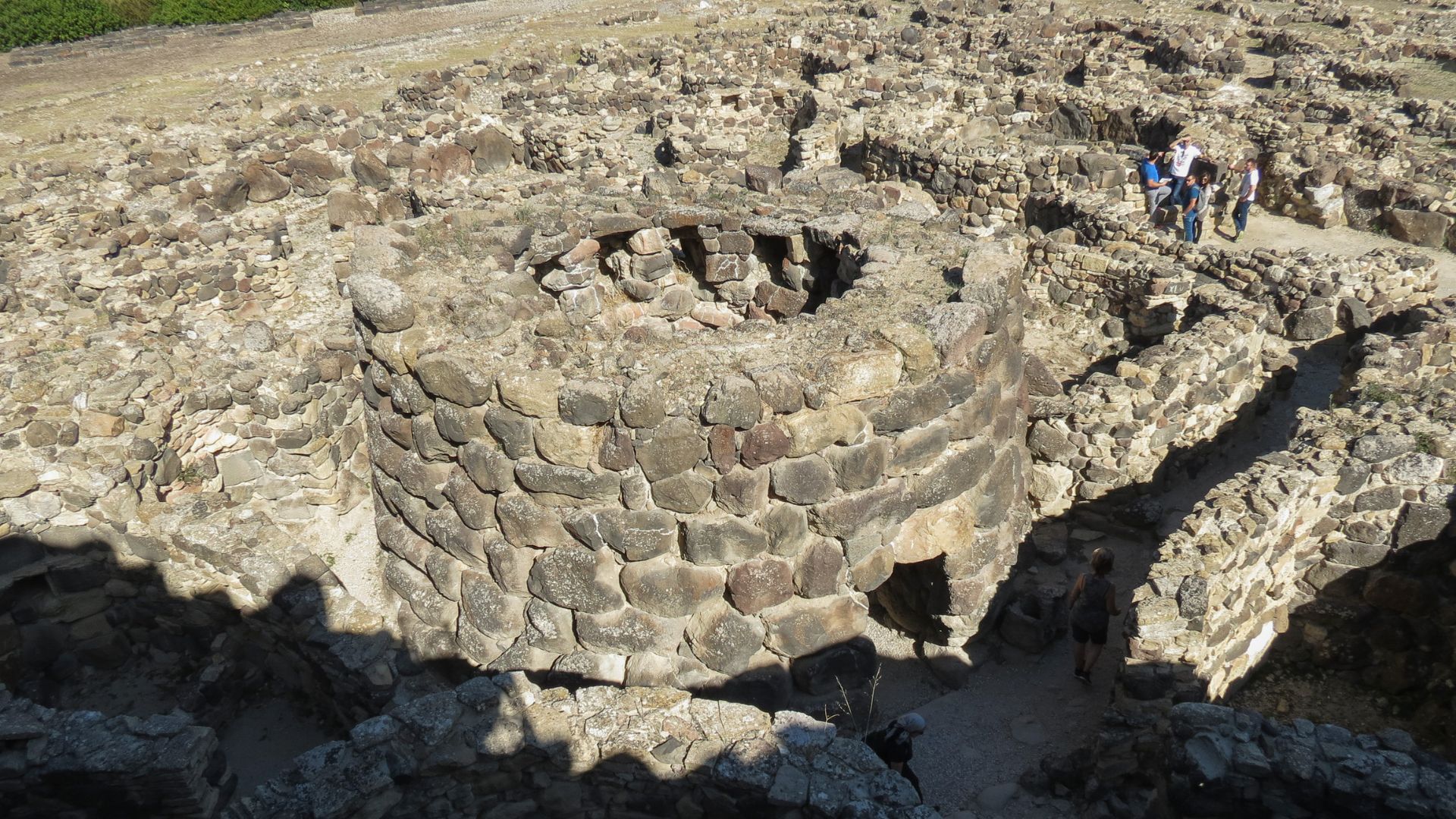
Nuragic Civilization and the Sardi
The Nuragic civilization really marked the Sardi people’s peak.
Walking through Su Nuraxi, I could almost feel the presence of this vibrant Bronze Age society.
Their economy depended on farming, herding, and metal work.
They traded with Mycenaeans, Cypriots, and other Mediterranean cultures, bringing in fresh ideas and technologies.
The complex served as the social and political heart of the community.
Around the central nuraghe, a village of circular huts grew up where people lived and worked.
Su Nuraxi gradually declined after 730 BCE, as Phoenician and Carthaginian influence grew.
Still, people kept living there through Roman times, showing just how resilient Sardinian culture could be.
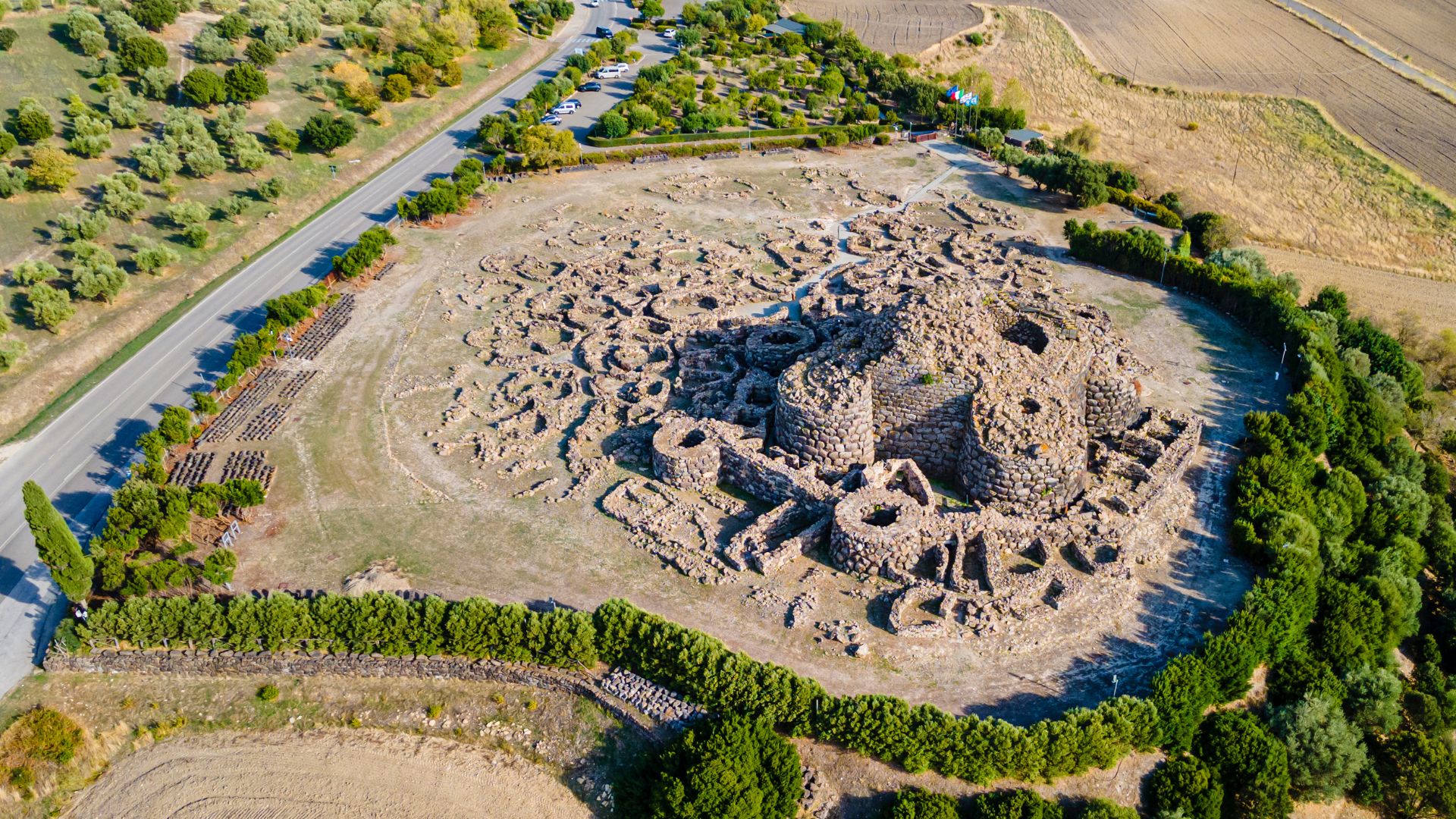
Unique Features of Nuraghe Architecture
When I first set foot at Su Nuraxi, its impressive stone engineering immediately caught my eye.
These towers have stood for thousands of years, and their architectural tricks are pure Sardinian genius.
Central Tower and Megalithic Structure
At the heart of Su Nuraxi stands the imposing central tower, about 18.6 meters tall.
Built from basalt stone between the 17th and 16th centuries BCE, it really dominates the area.
Inside, I found three chambers connected by a spiral staircase that winds upward.
This clever design let people move between levels while keeping the building solid.
They built the tower with huge stones, fitted together without mortar.
Walking through those ancient spaces, I couldn’t help but admire the skill it took to make them last.
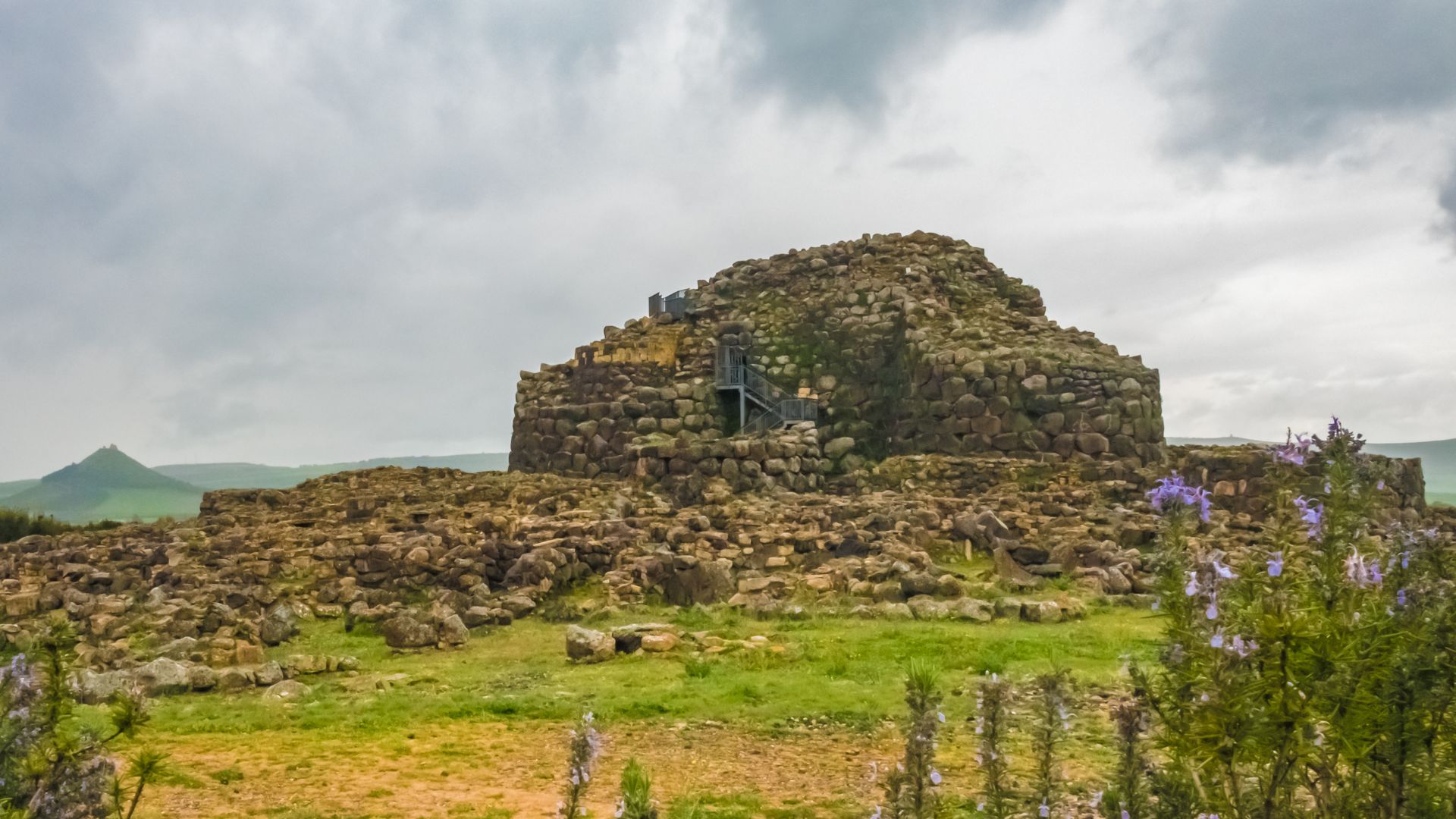
Engineering and Construction Techniques
Nuraghe builders used some advanced engineering methods for their era.
The truncated conical shape isn’t just eye-catching—it distributes weight, making the towers super stable.
The walls taper inward as they rise, creating a corbeled dome.
That means the structure can support itself and stand up to Sardinia’s occasional earthquakes.
I was surprised to learn many nuraghi have built-in drainage systems.
These clever features keep water out and help explain why so many towers still stand.
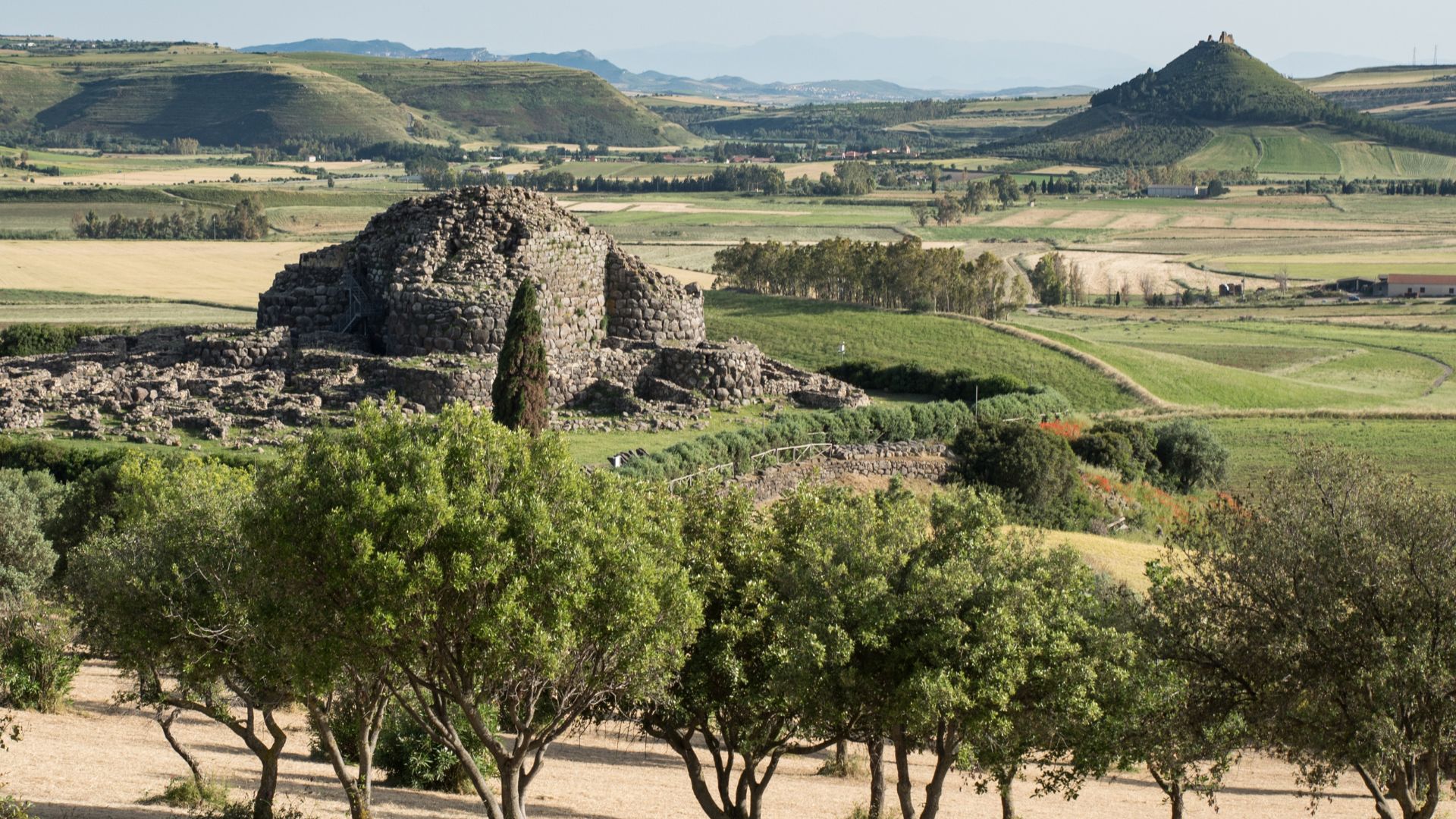
Nuragic Architecture
Nuragic architecture changed over time.
Early towers were simple, but later ones, like Su Nuraxi, became much more complex.
You won’t find these structures anywhere but Sardinia.
There are over 7,000 nuraghi scattered across the island, each with its own quirks but all sharing key Nuragic traits.
The architecture even hints at social structure.
The central tower usually housed the elite or served ceremonial roles, while other buildings had different uses.
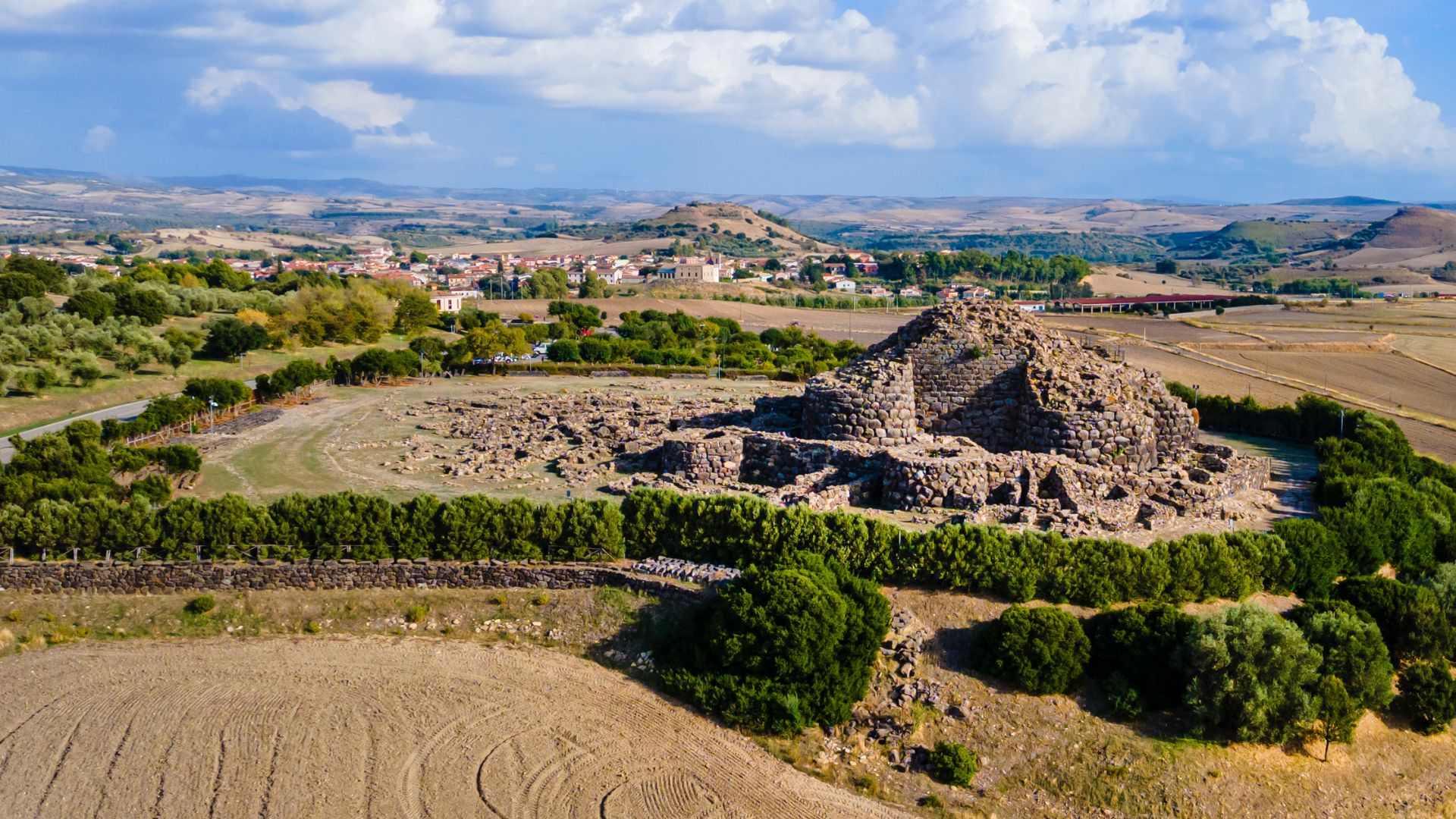
Ancient Structures and Temples
Nuragic sites often include more than just towers.
At Su Nuraxi, I wandered through a whole village of stone huts around the main tower.
Many nuraghi likely served more than one purpose.
Some evidence points to religious, political, or economic roles for these sites.
The Nuragic civilization also built “well temples” near many nuraghi.
These had elaborate water systems believed to have spiritual meaning, blending practical engineering with ritual.
The Archaeological Importance of Su Nuraxi
Su Nuraxi stands out as one of the Mediterranean’s most remarkable archaeological sites.
It gives us a rare look into Bronze Age life on Sardinia.
The site’s preservation and complex layout have made it a goldmine for understanding ancient Sardinian culture.
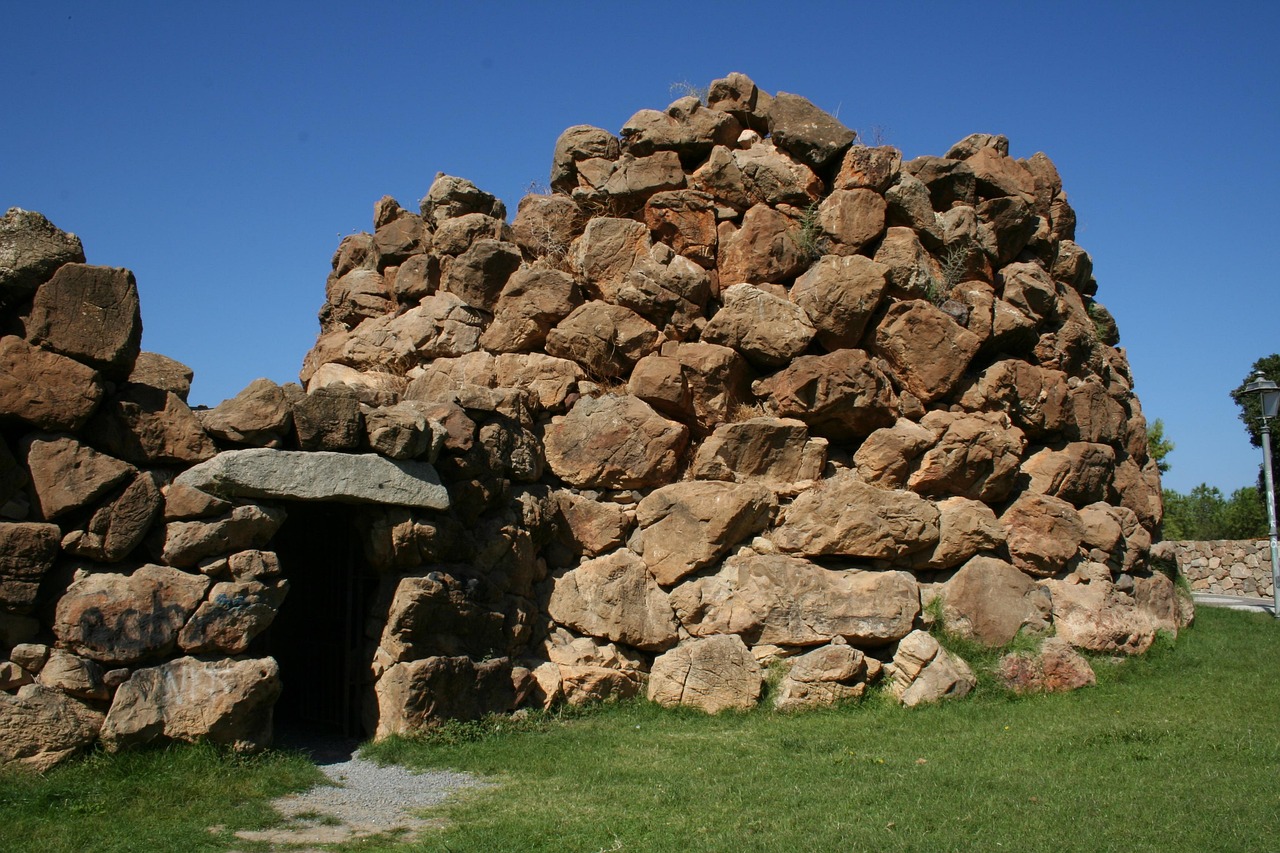
Discovery by Giovanni Lilliu
Giovanni Lilliu, often called the father of Sardinian archaeology, started the rediscovery story.
In 1949, he began digging at what locals thought was just a hill overgrown with plants.
I found it amazing that Lilliu spent nearly twenty years carefully uncovering this place.
Before his work, people barely understood nuraghi.
Lilliu’s excavations revealed Su Nuraxi wasn’t just a tower—it was a full prehistoric settlement.
His discoveries changed how we see Sardinian prehistory.
What really strikes me is how Lilliu’s work showed the Nuragic civilization was far from primitive.
He proved these ancient Sardinians had advanced defensive systems and community structures.
UNESCO World Heritage Recognition
In 1997, Su Nuraxi earned UNESCO World Heritage status, highlighting its cultural importance.
UNESCO called it the best-preserved and most complete example of this kind of prehistoric architecture.
The committee praised the site’s testimony to the nuragic civilization.
When I visited, I noticed information panels explaining how UNESCO recognition brought international attention and protection to Su Nuraxi.
What makes this site stand out among UNESCO listings is its unique architectural tradition.
The UNESCO status has helped secure funds for ongoing preservation and research, revealing even more about Bronze Age Sardinia.
Archaeological Excavations and Finds
Excavations at Su Nuraxi have turned up some fascinating artifacts.
Archaeologists found pottery, bronze tools, and religious objects, all showing the nuragic people’s skills.
One of the coolest discoveries was the complex water management system.
I was fascinated by the ancient channels and basins that carried water through the settlement.
Digging around the central tower, researchers found living quarters arranged in circles.
These finds point to a well-organized society where families lived close together.
If you’re curious, many artifacts from Su Nuraxi are on display at the nearby Museo Casa Zapata.
There, I saw beautifully preserved ceramics, bronze figurines, and tools that made the ancient world feel real.

Cultural and Religious Significance
Su Nuraxi’s nuraghe meant much more than just defense.
As I explored, I realized these ancient structures sat at the heart of Sardinian spiritual life and community identity.
They served as both religious centers and symbols of power.
Religious Purpose and Sacred Wells
Visiting Su Nuraxi, I couldn’t help but sense a ceremonial atmosphere.
Many archaeologists think nuraghi connected to water cults and maybe even astronomy.
The complex often included sacred wells, which really caught my interest.
These wells, like the famous one at Santa Cristina (not at Su Nuraxi but similar), were built with incredible precision.
During equinoxes, sunlight would hit specific spots inside.
Ritual objects found at nuraghi sites suggest offerings to gods.
Bronze figurines of warriors, animals, and boats reveal a sophisticated belief system.
These towers weren’t just fortresses—they were places where ancient Sardinians reached for the divine.
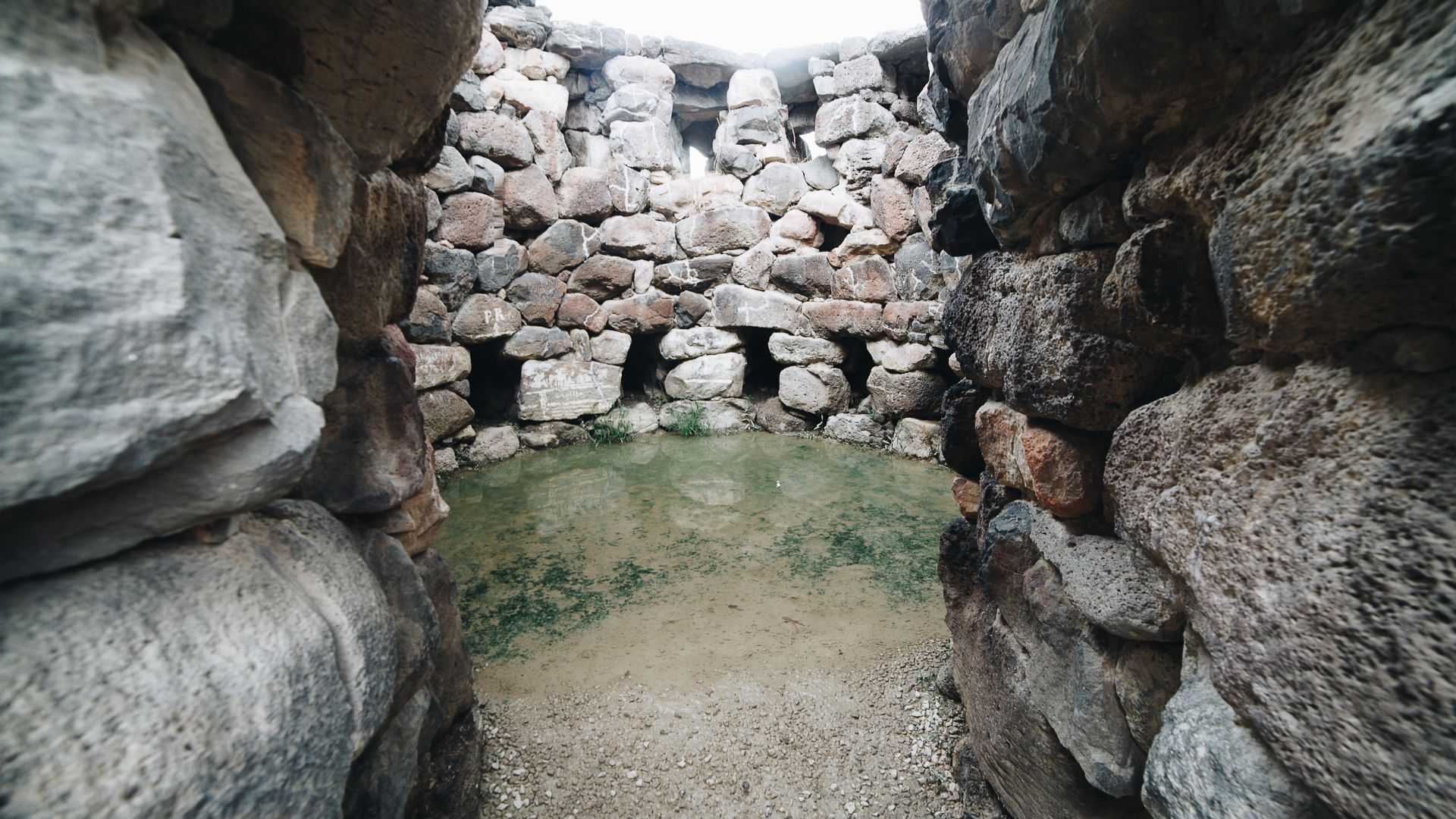
Nuraghe Su Nuraxi in Sardinian Myth
Locals love to tell stories about Su Nuraxi.
Many believe giants or magical beings built these towers.
Some legends say fairies called “janas” lived in the nuraghi and had special powers.
Others talk about hidden treasures guarded by spirits inside the stone walls.
Even after Christianity arrived, people kept associating nuraghi with mystical properties.
A few locals told me they believe the towers have healing energy or act as portals to other worlds.
These ancient buildings have become powerful symbols of Sardinian identity.
You can even spot the nuraghe on Sardinia’s flag and official emblems.
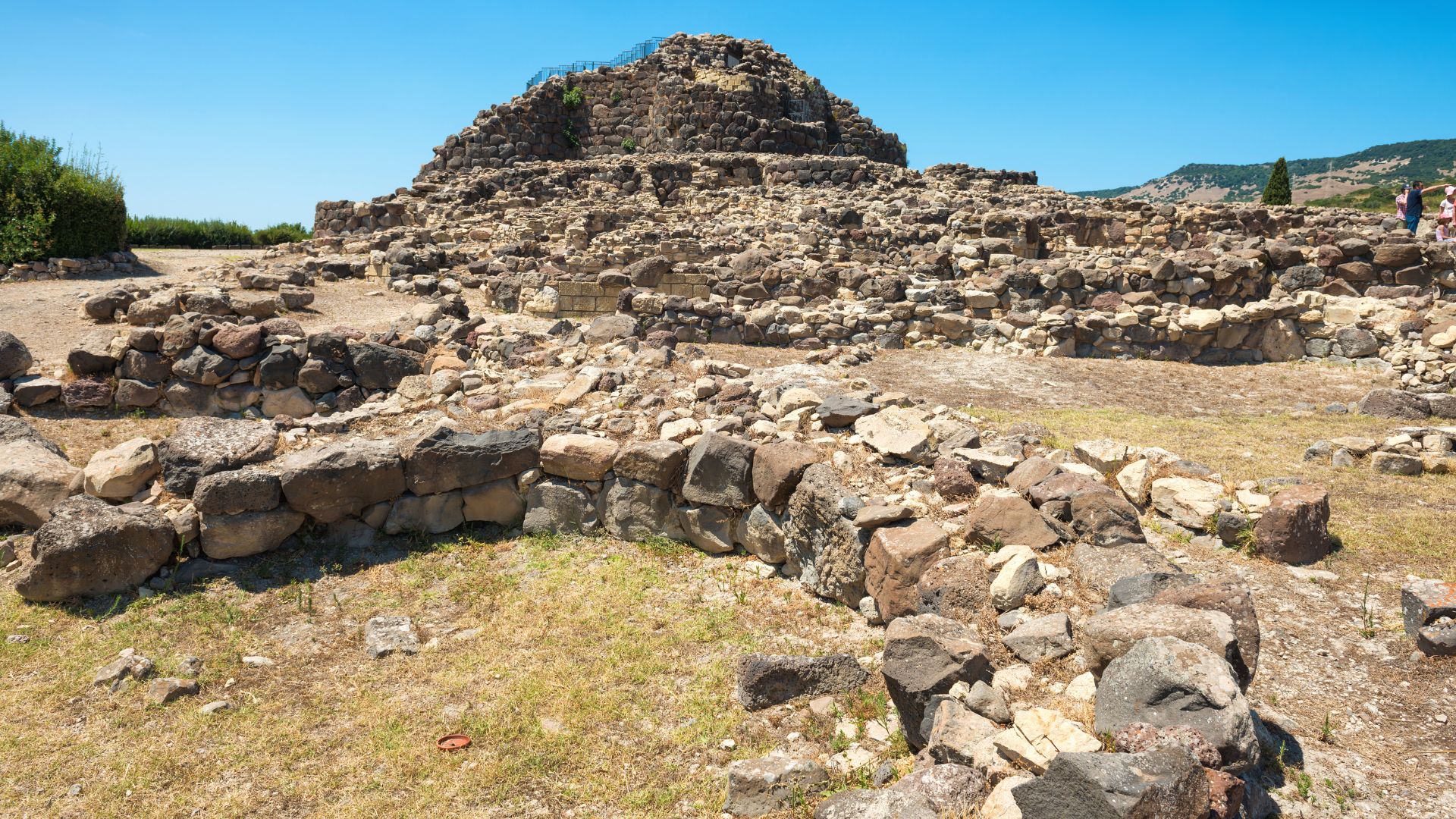
Connections with Phoenicians and Etruscans
As Mediterranean trade grew, Su Nuraxi and other nuraghi became contact points with other cultures.
I learned that Phoenician merchants often visited, bringing goods and new ideas.
Archaeologists have found Phoenician artifacts mixed with Nuragic ones, hinting at peaceful trade.
This cultural mixing influenced religious practices at Su Nuraxi.
Some Phoenician gods may have joined local worship.
The Etruscans also had ties with Nuragic communities.
Bronze figurines from Su Nuraxi look a lot like Etruscan art, showing a clear exchange of ideas.
These interactions didn’t erase Nuragic identity—they enriched it.
The people at Su Nuraxi absorbed foreign influences but kept their unique traditions.
That kind of resilience really says a lot about Nuragic society.
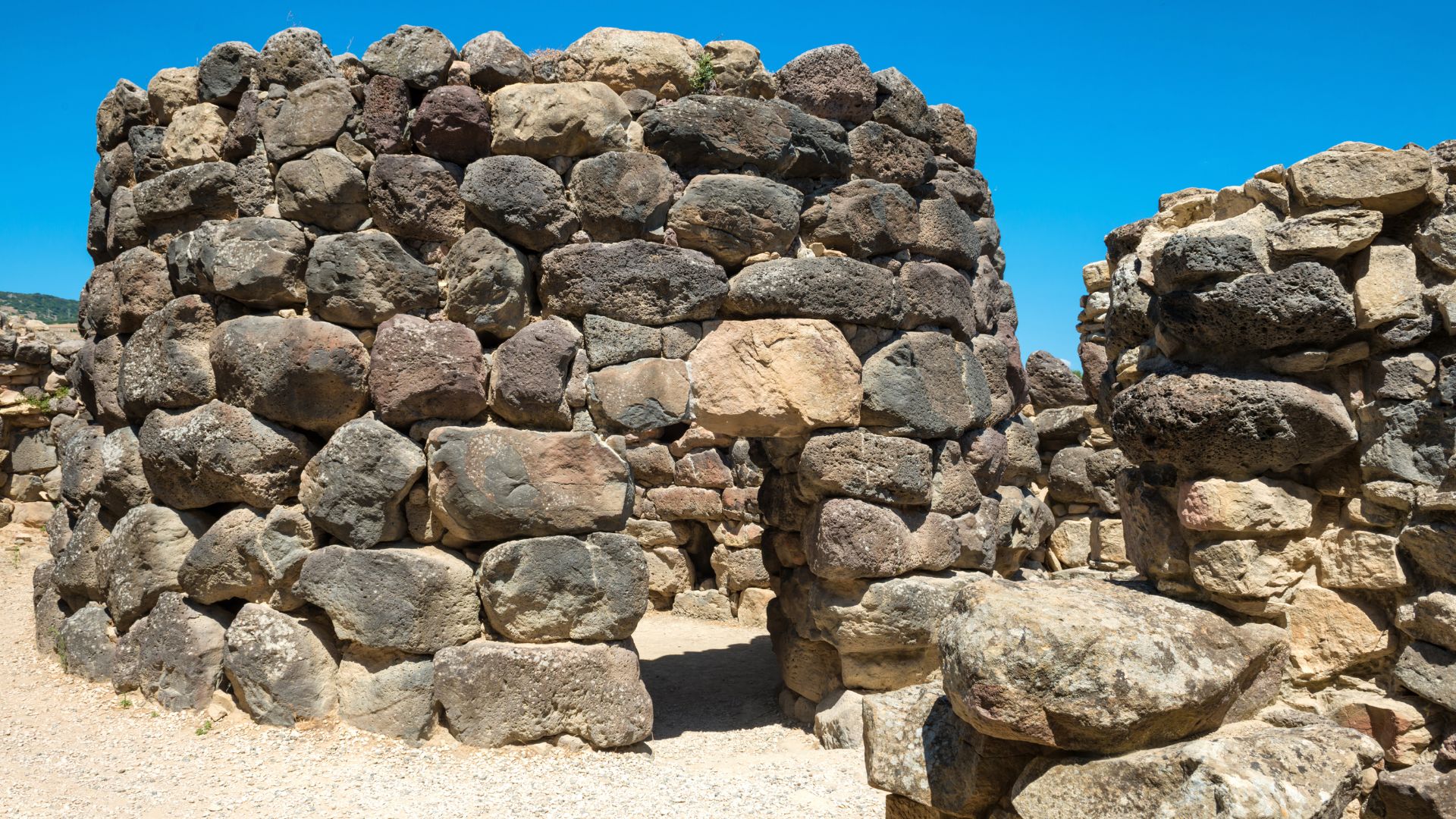
Visiting Su Nuraxi: Practical Travel Insights
If you’re planning to visit Su Nuraxi, a little prep goes a long way.
When I went, timing, guided tours, and checking out the area made all the difference.
Guided Tours and Tickets
You have to join a guided tour at Su Nuraxi, but honestly, it’s worth it.
Tours usually cost €11 for adults, with student, senior, and child discounts.
I suggest booking tickets online ahead of time, especially in summer when it’s busy.
The guides know their stuff and really bring the site to life with stories.
Tours last about an hour and are available in:
- Italian
- English
- French
- German
- Spanish (seasonal)
If you want to dig deeper, you can book a specialized archaeological tour for €15.
These offer more detailed insights into how the Nuragic people lived and built their towers.
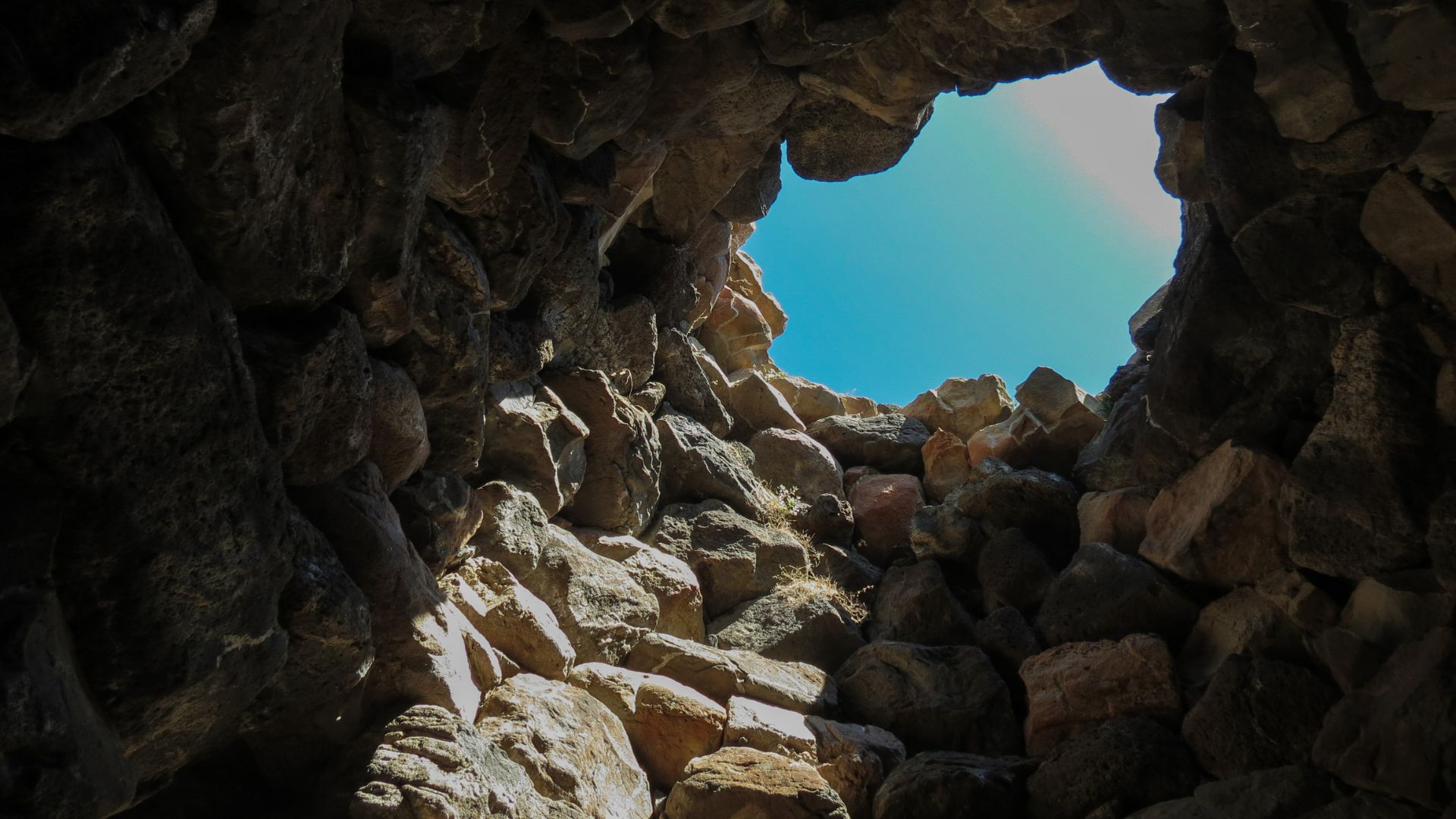
Opening Hours and Access
Su Nuraxi welcomes visitors all year, but the hours change with the seasons.
- Summer (April-October): 9:00 AM to 8:00 PM
- Winter (November-March): 9:00 AM to 5:00 PM
- Closed: December 25 and January 1
You’ll find the site about 60 km north of Cagliari. I made the drive in about an hour, but you can also catch public buses from Cagliari to Barumini several times a day.
Just a heads up—the last bus back leaves pretty early. Double-check the schedule so you don’t get stranded.
Definitely wear sturdy shoes, since the stone pathways can be uneven and tricky. The main complex isn’t really wheelchair accessible because of the ancient layout, though the visitor center and some of the surrounding grounds are much easier to navigate.
Exploring Barumini and Surrounding Sites
Barumini itself feels charming and deserves a few hours of wandering.
After Su Nuraxi, I strolled through narrow streets and stumbled upon Casa Zapata—a Spanish mansion built right on top of another nuraghe. The museum inside has some fascinating displays about local history.
Within a half-hour drive, you’ll run into other archaeological gems:
- Nuraghe Genna Maria near Villanovaforru
- Su Naxeddu nuraghe
- The sacred well of Santa Vittoria
If you want to see Su Nuraxi and these nearby sites, set aside a full day. Most people make their base in Cagliari or Alghero when exploring this part of Sardinia.
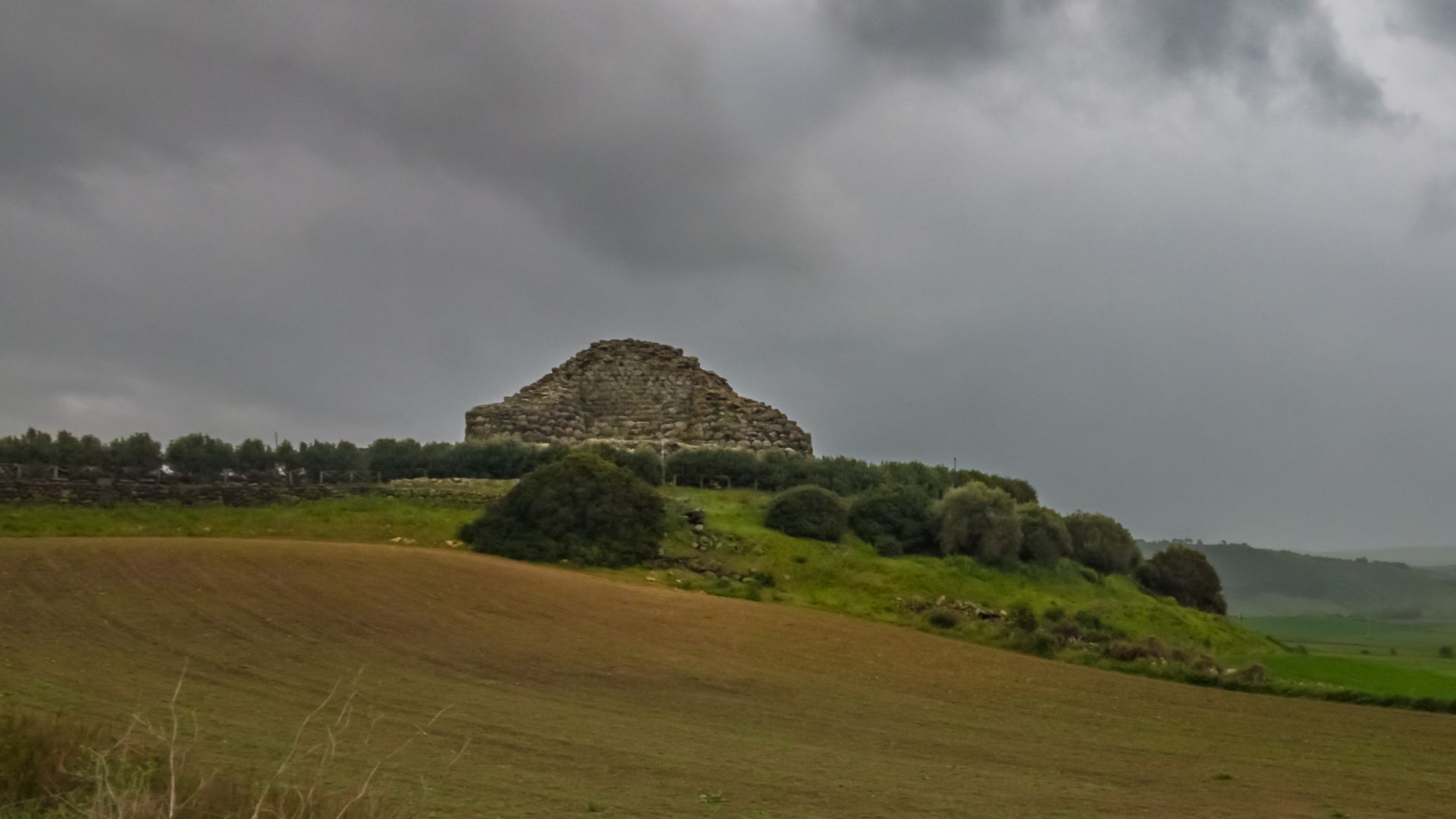
Discovering Sardinian Countryside and Cuisine
The drive to Barumini rolls through Sardinia’s gorgeous countryside—hills, olive groves, sheep dotting green fields. I couldn’t resist stopping a few times just to breathe it all in and grab some photos.
Local restaurants around Barumini serve up authentic Sardinian food you really shouldn’t skip. I loved the culurgiones (pasta filled with potato and mint), roast suckling pig (maialetto), and seadas (fried pastry with cheese and honey).
The area around Su Nuraxi is also known for great wines. Most places pour Cannonau, a bold red that goes perfectly with hearty Sardinian dishes.
If you want a real taste of the region, try staying at a family-run agriturismo near Barumini. They offer both cozy accommodation and home-cooked meals with ingredients right from their own land.


Su Nuraxi Through the Ages
Su Nuraxi has seen so much over the centuries. It started as a lively Bronze Age settlement and now stands as a UNESCO World Heritage site.
Its stones have survived Roman occupation, periods of abandonment, and eventually, rediscovery and preservation.
Roman Period and Integration
When I visited Su Nuraxi, the layers of Roman influence stood out among the old Nuragic ruins. The Romans showed up in Sardinia around 238 BCE and changed the island’s culture for good.
At Su Nuraxi, the Romans didn’t just tear everything down. Instead, they adapted the site for their own use.
The central tower once soared nearly 18.6 meters, but during Roman times, people partially repurposed it. Roman pottery and coins scattered around the site really tell the story of this cultural transition.
Over time, the Nuragic people blended into Roman society and left behind their old defensive ways. Su Nuraxi shifted from a fortress to a more open settlement, with some spaces now used for Roman-style farming and daily life.
Preservation and Modern Legacy
When I walk through Su Nuraxi today, I can’t help but marvel at how close this remarkable place came to disappearing. For centuries, people abandoned it, and the site just sat buried, forgotten by almost everyone.
Then, in the 1950s, archaeologist Giovanni Lilliu came along and started digging. He uncovered Su Nuraxi’s intricate design—the central tower, the four-towered bastion, and a whole village made up of round stone homes.
UNESCO stepped in during 1997 and declared it a World Heritage Site. It’s actually the only one in Sardinia, which feels pretty special.
These days, thousands of visitors show up every year. I joined a guided tour and learned how the Nuragic people managed to stack those massive basalt blocks without any mortar. It’s honestly mind-blowing how these structures have lasted so long.
People are still working hard to preserve Su Nuraxi. They face the tricky job of letting tourists visit while also protecting this one-of-a-kind piece of Sardinia’s Bronze Age.

